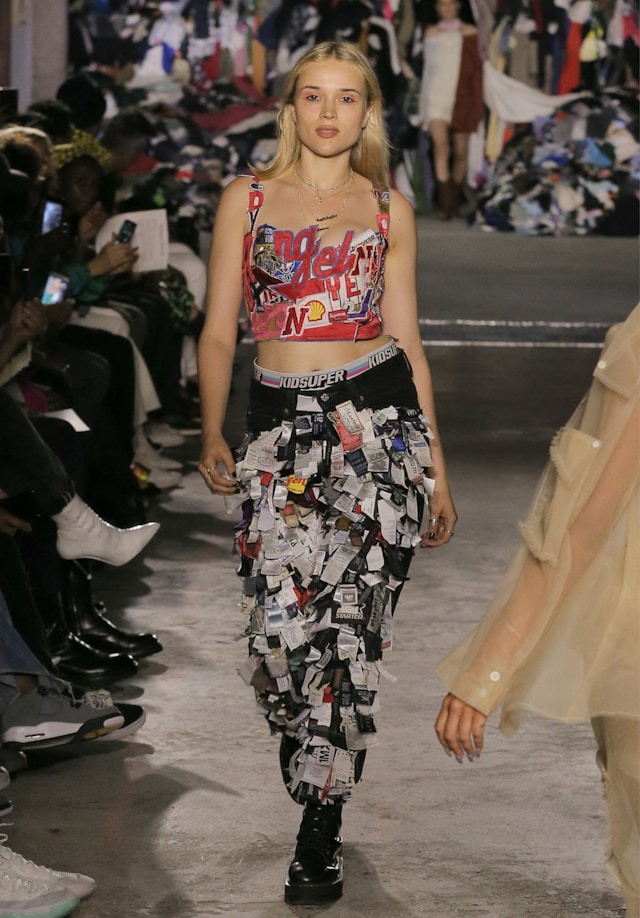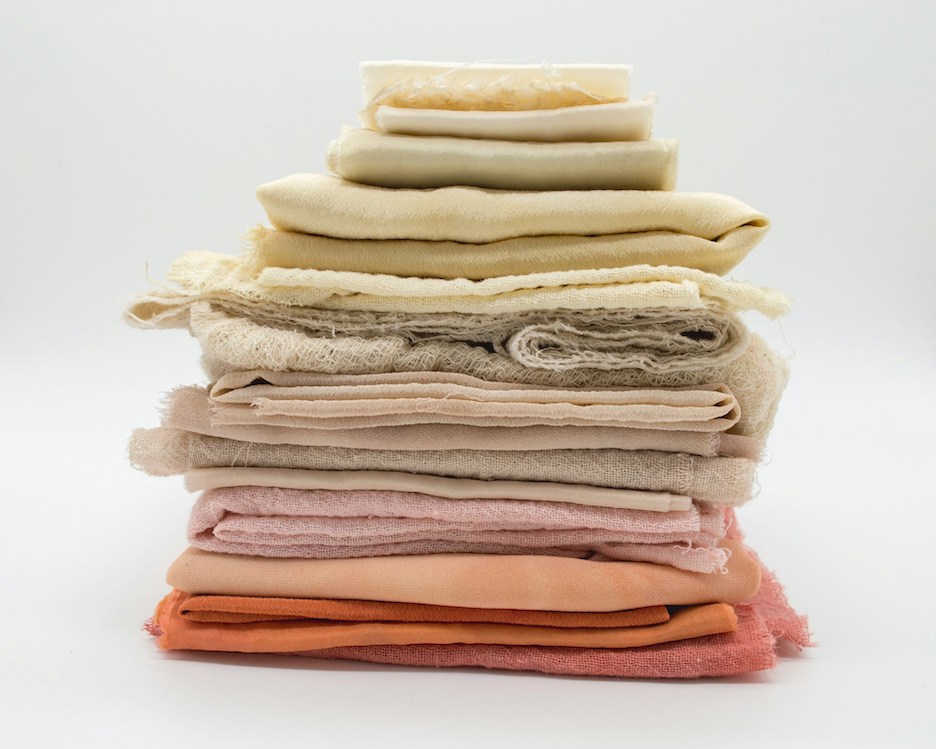
An Exploration of Sustainable Law in the Luxury Fashion Space
In response to mounting concerns about the fashion industry’s environmental impact, Fashion Weeks are introducing a series of sustainability requirements that all participants must fulfill to appear on schedule. Copenhagen Fashion Week set an industry-wide precedent, spurring talks of additional, forthcoming sustainability legislation in the global fashion sphere. But, what is really going on?
At a glance –the fashion industry appears a rather glamorous enterprise. One might find themselves easily lost in the hysterics of it all– the beautiful leathers and tactile suedes, the models with their done-up hair, the brand dinners posted to influencer Instagram accounts. While the industry carefully curates an illusion of grandeur, its nature is much darker, much more exploitative than is often disclosed. As a whole, the fashion industry is regarded as one of the lead contributors to environmental degradation –by way of greenhouse gas emissions, land and water pollution, and habitat destruction– and has been continuously criticized for its unethical attitude towards human and animal welfare. Fortunately, in recent years, brands and companies have started to actively address some of these major issues, paving the way for a more sustainable future. Among these pioneers for change are Fashion Week committees, whose biannual events showcase some of the world’s largest and most well-known retail brands. Through their initiation of sustainability requirements and other measures, these teams hope to help reconfigure the fashion industry into one which prioritizes environmental and social wellbeing over opulence and greed.
Enlarged and emboldened on the Copenhagen Fashion Week official website, a set of Sustainability Requirements are proudly listed, outlining a minimum set of standards which all CPHFW participants must meet to appear on schedule. Spread across six “focus” areas – strategic direction, design, smart material choices, working conditions, consumer engagement, and show production – these standards highlight direct points of action for brands to follow. Currently, these requirements mean that at least 50% of any brands’ collection must be made of certified, preferred, upcycled, or deadstock materials, and that suppliers must be ethically sourced and in accordance with international guidelines e.g. freely chosen employment, and no child labor. Runway productions, which are often characterized by their lavish nature, must be zero waste, minimizing the reliance on single-use plastic packaging and non-recyclable goods.

This year’s runway shows mark the second year of CPHFW’s sustainability requirements, and industry changes are already taking effect.
According to the CEO of Copenhagen Fashion Week, Cecilie Thorsmark: “When we launched [the sustainability action plan], it was something that would affect roughly 30-40 show brands and now it’s 1,500 [CIFF] exhibitors. So it’s gaining volume and volume is crucial for generating impact.”
The shift towards a more sustainable future in fashion does not end here – Thorsmark and her team plan to continue pushing the industry’s boundaries through the annual introduction of a new sustainability requirement. Thorsmark is optimistic that other, more well established fashion weeks – such as New York, Milan, and Paris – will integrate the sustainability framework into their own practices, noting that her team has already “ been approached by a lot of Fashion Weeks and organizations.” CPHFW’s efforts demonstrate that fashion can simultaneously be stylish and sustainable – that the adherence to sustainable practice does not dilute, but rather enhances, a brands’ portfolio.
Other fashion weeks are also starting to hold their brands accountable, finding creative ways to encourage eco-friendly innovation. Milan Fashion Week, for example, introduced an incentivized initiative back in 2023 where brands were rewarded for outstanding sustainability commitments. In collaboration with the Ethical Fashion Initiative of ITC and the Ellen MacArthur Foundation, Milan Fashion Week hosted an official awards ceremony which recognized best practice in the industry, such as Gucci’s ‘Denim Project’ which incorporated regeneratively-farmed cotton into its designs.
The Institute of Positive Fashion – established by the organizers of London Fashion Week – has contributed to global efforts, as well, through their launch of the Future of Fashion Innovation Showcase. This showcase connects designers with sustainability innovators, facilitating the exchange of ideas throughout all sects of the fashion value chain – ranging from designing and sourcing, to eventual production and distribution. As such, brands are able to proactively address responsible and sustainable business challenges as – or, often, before – they appear.

This deepening commitment to sustainable action is especially apparent across the EU, where proposed legislation – some of which will take effect in 2024 – addresses issues relating to all aspects of the fashion supply chain.
PRODUCTION & DESIGN
Throughout the lifecycle of any single product, a series of environmentally-harmful processes often take place. Take, for example, a pair of shoes. Not only do raw materials like leathers, rubbers, and polyesters have to be extracted, these materials then have to be prepared and assembled through an energy-intensive process. Once manufactured, the shoes will have to be distributed, sometimes internationally, where they will be purchased, worn, and eventually discarded. The Ecodesign Directive for Sustainable Products (ESPR), proposed to take effect in 2025, will target the current state of production across the EU by establishing ecodesign requirements for a wide range of products. This framework is centered around the creation of products that are longer-lasting, more efficiently made, and whose materials are sustainably sourced. In addition to requiring degrees of recyclability and reusability for products available on the EU market, this new law will ban the destruction of excess or unsold goods. A digital product passport (DPP) will be introduced for obligated products, allowing for greater visibility into material and production driven data.
MARKETING
While many companies have taken legitimate steps towards adopting more environmentally-friendly practices, others seem to be taking advantage of the popularity of recent sustainability movements. In an attempt to meet changing consumer expectations, many companies have started marketing their products with misleading and unproven claims, giving the illusion that their products are sustainably or ethically produced. This phenomenon, referred to as greenwashing, deceives responsible customers and discourages the shift towards actually sustainable practices. In response, the EU is updating pre-existing laws to further regulate sustainability-based advertisement. Proposed regulations will ban the use of generic environmental claims, such as “environmentally friendly” or “climate neutral” without proof of performance, as well as of sustainability labels not established by public authorities. This legislation will likely provide a more meaningful vessel for honest communication between companies and their consumers, while also encouraging an adherence to sustainable methods of production.
WASTE MANAGEMENT
More than 5 million tonnes of clothing is discarded each year in the EU alone. Combined with the fact that less than 1% of textiles are actually recycled, the fashion industry is rightfully regarded as one of the most wasteful industries on the planet. In setting out to shape a greener, more circular fashion economy, the EU has drafted a Strategy for Sustainable and Circular Textiles which will specifically target textile consumption. The proposed legislation promotes durability in all textiles available to EU consumers, requiring them to be recyclable, repairable, and produced in accordance with a set of social and environmental codes of conduct. Reversing the industry’s casual attitude towards overproduction, these laws will especially affect fast fashion companies including those in countries like Asia, where nearly 70 percent of the EU’s textiles are currently manufactured.

THE NEW NORM?
While the EU is evidently at the forefront of the fashion sustainability movement, similar initiatives are shaping up in other regions, as well. For example, New York has introduced The New York Fashion Act and Fashion Workers Act which aim to hold retailers, brands, and manufacturers responsible for their environmental and social impacts. These initiatives will most strongly target larger-scale brands; specifically, clothing and footwear companies which generate over $100 million in revenue from New York businesses. These companies – ranging from luxury, multinational brands like Gucci and Louis Vuitton, to fast-fashion hubs like Shein and Fashion Nova – will be required to map their supply chains, assess environmental and social impacts within their practice, and set targets to counteract these impacts.
China – home to some of the worlds’ most renowned fast-fashion corporations – produces an estimated 20 million tonnes of fashion waste annually. Environmental pollution is heavily impacted by these industries, as the production of textiles accounts for 43% of greenhouse gas emissions in China. Cheap, harmful dyes used to treat fast-fashion garments have found their ways into major waterways, with 7 major rivers in China having been declared as toxic. In light of this, China is also taking initiatives towards reducing pollution and waste in their local industries. The Chinese government has officially pledged that the country will hit peak carbon emissions before 2030, and will become carbon neutral by 2060, a promising stat given China’s astounding contributions to the global climate crisis.
It seems, then, that the fashion industry is finally being held accountable for the many ways in which it affects people and the planet. Forthcoming legislation, like that seen across the EU, New York, and China, as well as initiatives such as those taken by Copenhagen Fashion Week shed light on a more sustainable future of fashion. Let’s just hope that it isn’t too late.
Highlight Image: © Jose P Ortiz via Unsplash
+ Words:
Tori Palone
Luxiders Magazine







